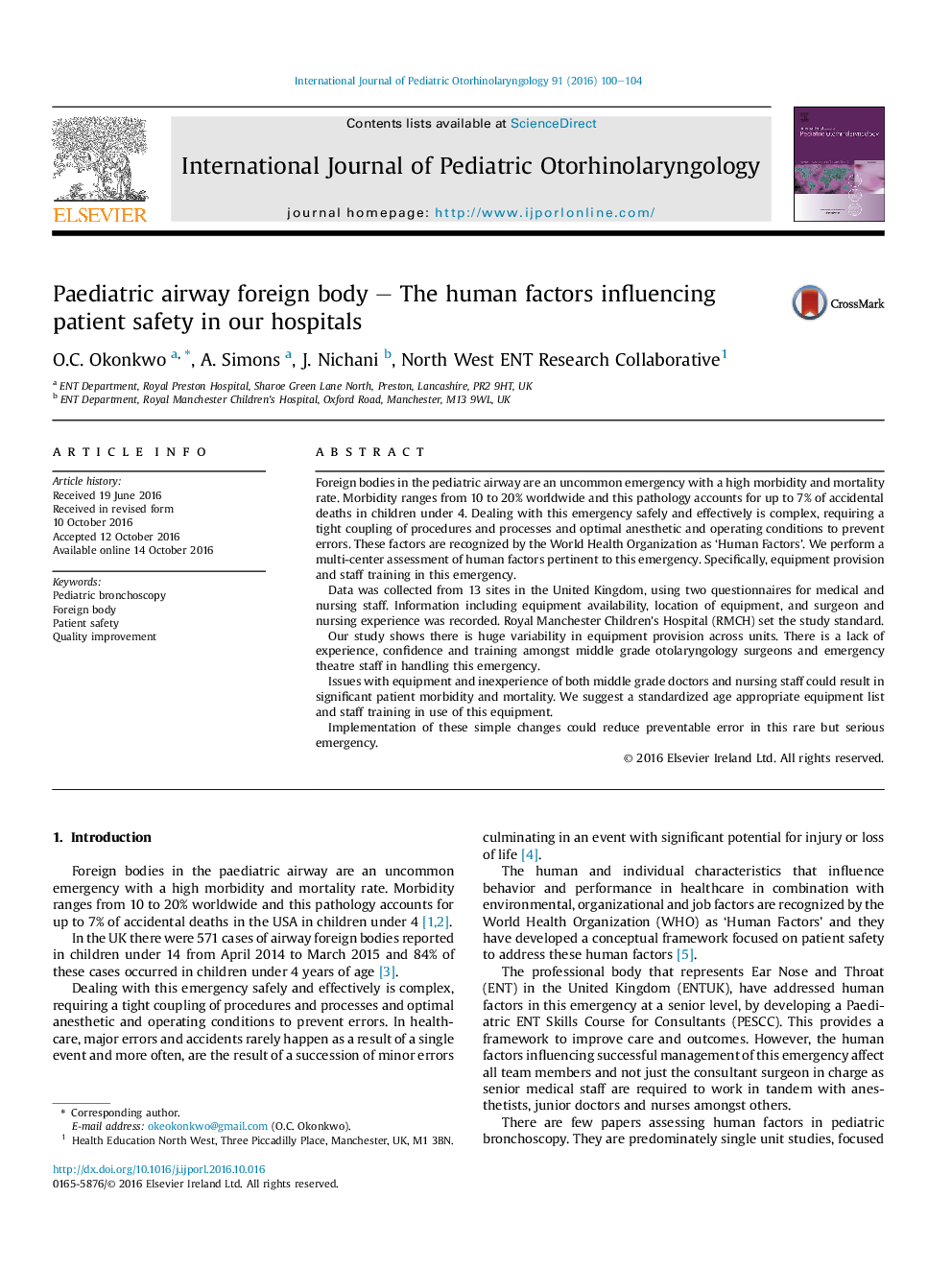| Article ID | Journal | Published Year | Pages | File Type |
|---|---|---|---|---|
| 6212958 | International Journal of Pediatric Otorhinolaryngology | 2016 | 5 Pages |
Foreign bodies in the pediatric airway are an uncommon emergency with a high morbidity and mortality rate. Morbidity ranges from 10 to 20% worldwide and this pathology accounts for up to 7% of accidental deaths in children under 4. Dealing with this emergency safely and effectively is complex, requiring a tight coupling of procedures and processes and optimal anesthetic and operating conditions to prevent errors. These factors are recognized by the World Health Organization as 'Human Factors'. We perform a multi-center assessment of human factors pertinent to this emergency. Specifically, equipment provision and staff training in this emergency.Data was collected from 13 sites in the United Kingdom, using two questionnaires for medical and nursing staff. Information including equipment availability, location of equipment, and surgeon and nursing experience was recorded. Royal Manchester Children's Hospital (RMCH) set the study standard.Our study shows there is huge variability in equipment provision across units. There is a lack of experience, confidence and training amongst middle grade otolaryngology surgeons and emergency theatre staff in handling this emergency.Issues with equipment and inexperience of both middle grade doctors and nursing staff could result in significant patient morbidity and mortality. We suggest a standardized age appropriate equipment list and staff training in use of this equipment.Implementation of these simple changes could reduce preventable error in this rare but serious emergency.
